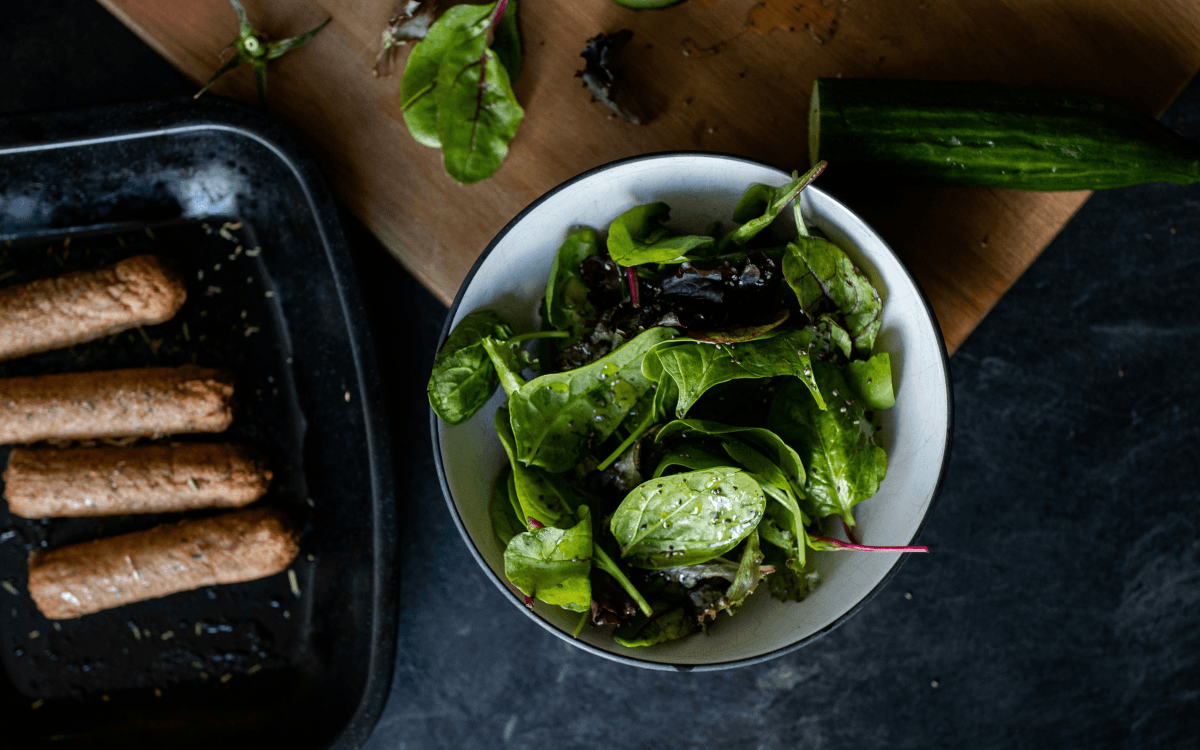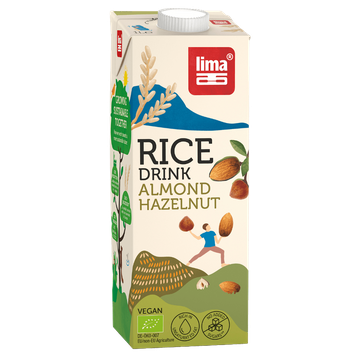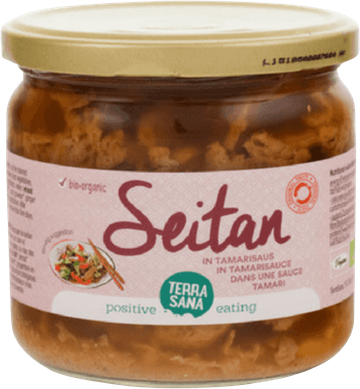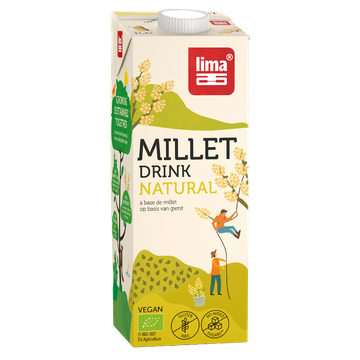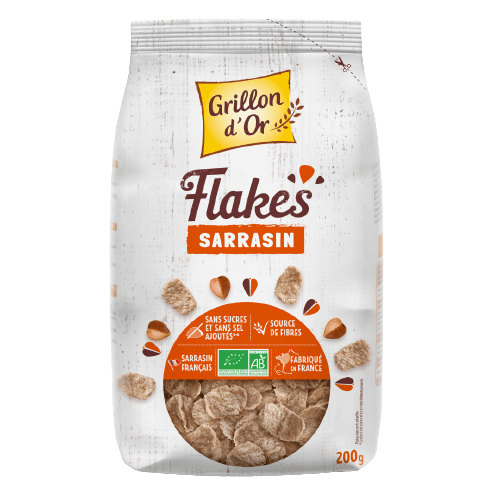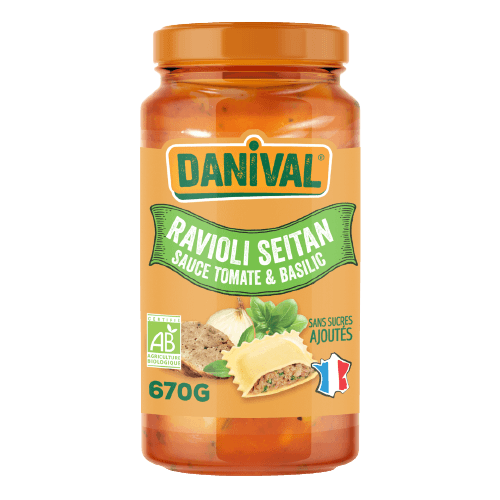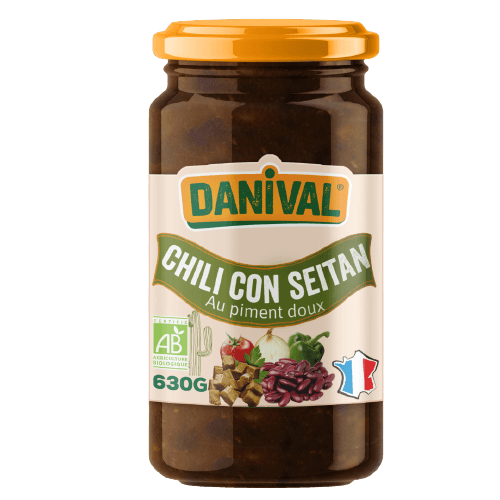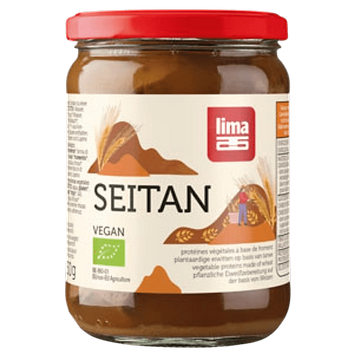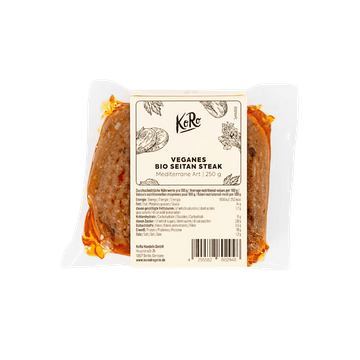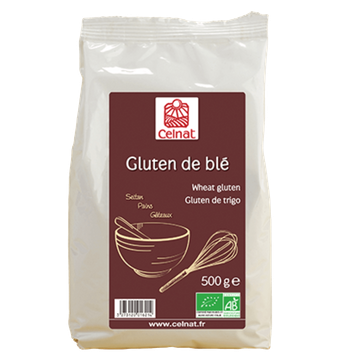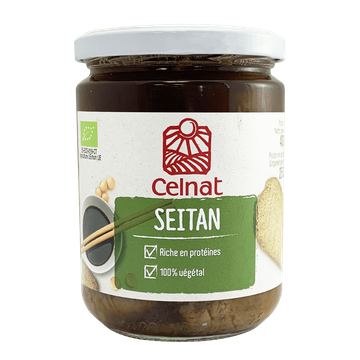Replacing meat with plant-based protein sources is becoming more and more common. Among these alternatives, seitan stands out as a top choice. But what exactly is seitan, what are its benefits, and how can you incorporate it into your recipes? This article reveals everything you need to know, along with ideas to help you add it easily to your diet.
What is Seitan?
The word “Seitan” comes from Japanese, where “sei” means “made of” and “tan” refers to “proteins.” In other words, seitan means “made of protein.” This high-protein food is made from wheat or spelt flour. Discovered in Asia over 1,000 years ago, it was traditionally used as a meat or fish substitute.
Seitan’s success in healthy and ethical cooking lies in its versatility. You can pan-fry, bake, or steam it, slice it into small pieces, or turn it into steaks. It’s widely available in organic stores, vegan shops, or online. At Kazidomi, for example, you can find:
- Seitan in tamari sauce
- Seitan chili
- Seitan-filled ravioli
The Benefits of Seitan
Seitan offers excellent nutritional value, especially when it comes to protein. It contains about twice as much protein as tofu, with around 18g per 100g. It’s also low in calories (about 90 kcal per 100g) and low in fat (around 1g per 100g), making it an ideal option for a healthy diet.
Seitan also contains all nine essential amino acids, making it a complete protein source. It’s rich in thiamine and iron, which makes it a great meat alternative with real health benefits.
How to Recognize Good Seitan
A good seitan should be crispy and slightly chewy on the outside, but tender and soft on the inside. It should tear easily into strands and be full of flavor. Poor-quality seitan tends to be too firm on the outside, overcooked, rubbery, or soggy in texture.
Seitan and Gluten: A Warning for the Intolerant
Seitan is made from wheat flour and is therefore rich in gluten. It’s not suitable for people following a gluten-free diet. If you are gluten-intolerant, consider alternatives like quinoa, amaranth, millet, buckwheat, or rice — all excellent gluten-free options that also provide plant-based protein and support a balanced, gluten-free lifestyle.
Three Easy Steps to Make Homemade Seitan
Want to try this protein-rich alternative at home? Here’s how to prepare your own homemade seitan using simple ingredients:
Ingredients:
- 8 cups of wheat flour
- 1 liter of water
- Herbs or spices of your choice
1. Kneading
In a large bowl, mix the wheat flour and water until you get a firm, elastic dough. Use your hands to knead it thoroughly.
2. Rinsing
Place the dough in a strainer, then in a bowl of cold water. Knead it until the water turns cloudy. Change the water and repeat until it runs clear — this indicates that the starch has been removed.
3. Cooking
Slice the dough into thin pieces and simmer in a broth made with herbs, spices, or vegetables for about 30 minutes. Your homemade seitan is now ready to be used in various recipes.
Recipe Ideas with Seitan
Whether store-bought or homemade, here are some ideas for incorporating seitan into your meals:
- Seitan Bowl – a quick and easy plant-based protein-packed dish.
- Seitan Spring Rolls – colorful spring rolls filled with veggies and seitan.
- Stuffed Seitan Roast – a delicious, healthy dish perfect for a hearty dinner.
Conclusion
Seitan is a healthy and versatile alternative to meat. Whether for health, ethical, or taste reasons, it fits easily into a balanced and varied diet. Take advantage of its many benefits by adding it to your favorite meals.
Seitan FAQ
1. What is seitan? Seitan is a high-protein meat substitute made from wheat or spelt flour, traditionally used in Asia for over 1,000 years.
2. What are the benefits of seitan? Seitan is rich in protein, low in calories and fat, and contains all nine essential amino acids, along with thiamine and iron.
3. How do you recognize good seitan? Good seitan is crispy on the outside, tender on the inside, easy to tear into strands, and packed with flavor.
4. Is seitan suitable for gluten-free diets? No, seitan is high in gluten and not suitable for people following a gluten-free diet.
5. How do you make homemade seitan? Knead a dough from wheat flour and water, rinse it to remove the starch, then cook it in a broth with herbs or spices.
6. What are some recipe ideas with seitan? Try dishes like a seitan bowl, seitan spring rolls, or a stuffed seitan roast.
7. Where can you buy seitan? You can find seitan in supermarkets, organic or vegan stores, and of course at Kazidomi.
8. What are the risks of seitan for those with gluten intolerance? Since seitan is made from wheat flour, it can contain up to 80% gluten and is not recommended for people with gluten intolerance.
